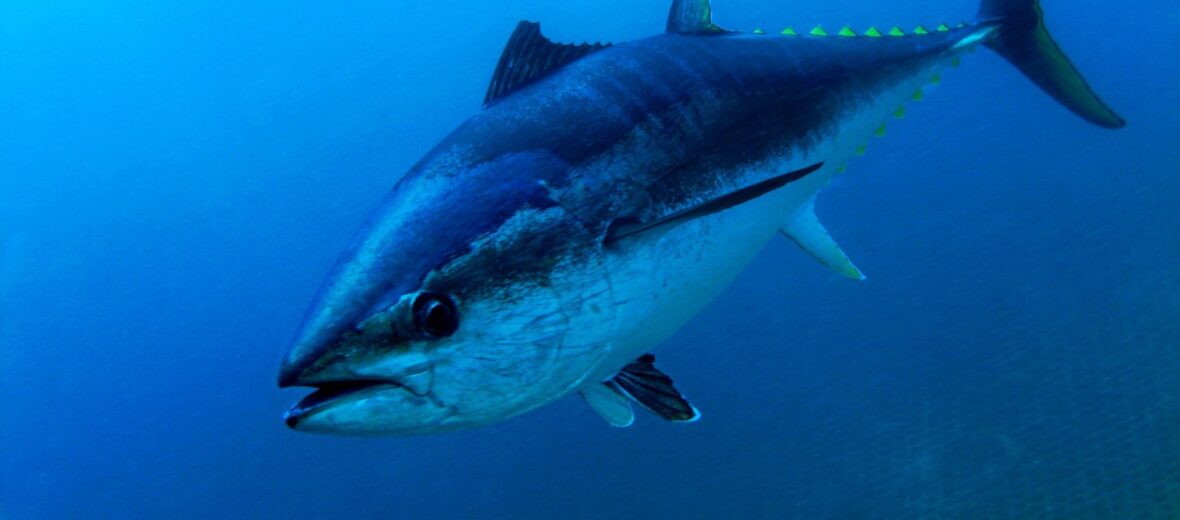
Being the fastest or the strongest predator in the open ocean isn’t always enough. Just ask the Atlantic bluefin tuna. Large and small-scale fisheries target these massive fish as they yield a hefty price tag. There are 3 known species of bluefin: southern, Pacific, and Atlantic. The Atlantic is the largest and subsequently the most endangered of the 3. These huge tunas are listed as Endangered by the IUCN, due to overfishing and bycatch (getting caught in fishing nets and long lines). They are currently being fished faster than they can reproduce. Wiping these beautiful creatures out would disrupt the food chain dramatically.
First the Stats…
Scientific name: Thunnus thynnus
Weight: Up to 550 lbs.
Length: Up to 15 feet
Lifespan: Up to 30 years
Now on to the Facts!
1.) As fry, they eat zooplankton. When they get older, the size of their prey increases. As adults, they eat large bony fish and invertebrates, like herring, bluefish, mackerel, and squid.
2.) These fish are preyed upon by fish that eat zooplankton, when the tuna are small; up to toothed whales and sharks, when the tuna are adults.
3.) Atlantic bluefin tuna are prized sushi meat.
4.) Believe it or not, bluefin tuna are warm-blooded.
5.) Bluefin tuna are very migratory and can travel from Newfoundland, Canada all the way down to the Mediterranean and even the Gulf of Mexico to reach spawning waters.
But wait, there’s more on the Atlantic bluefin tuna!
6.) Adults don’t begin breeding till they reach about 8 years old.
7.) They spawn from April – June.
Did you know…?
A single fish can sell for nearly $2 million!
8.) Females produce up to 10 million eggs per year! Most of those will be eaten by predators, however.
9.) Adults can swim at speeds of up to 43 mph!
Now a Short Atlantic Bluefin Tuna Video!
Also, check out the Critter Science YouTube channel. Videos added frequently!
Want to suggest a critter for me to write about? Let me know here.



